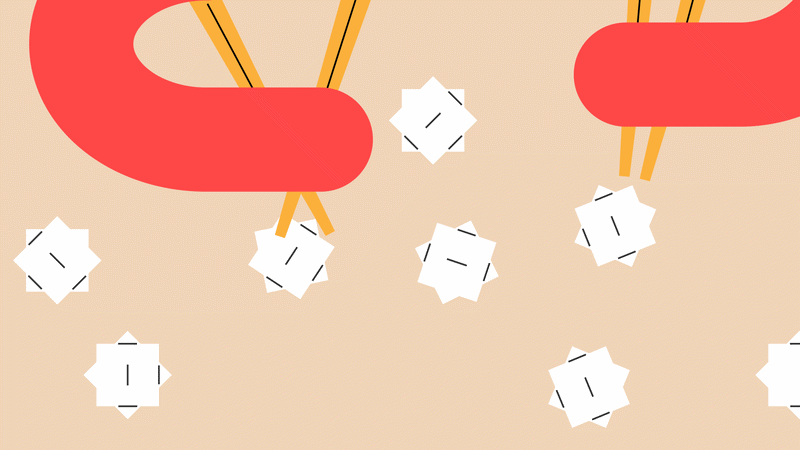
Chopstick relay
You’ll need
- Bowls
- Tables
- A pair of chopsticks for each team
Before you begin
- Print the 'Facts about Chinese food' sheet.
- Cut the facts along the lines, so each fact is separate. Scrunch up each fact into a ball.
- Place a full set of scrunched up facts into each small bowl.
- Put a table at one end of the room, and put the bowls of facts on the table, leaving space between each one.
Play the game
- Ask if anyone can name a country which uses chopsticks, and if anyone knows how to use chopsticks.
- Use the tips below to ensure everyone knows how to use a pair of chopsticks.
- Split into teams, and give each team one pair of chopsticks. Each team should stand in a line at the other end of the room to the table, in line with a bowl of facts.
- The first player should run to their team’s bowl, use their chopsticks to pick up a fact, and place it in their other hand. They should then run back to their team, holding a fact in one hand and the chopsticks in another.
- The first player should pass the chopsticks to the second player, and go to the back of their team’s line.
- Players should repeat these steps to keep collecting facts until their bowl is empty.
- Teams should then flatten their facts and read them as a group, talking about what they’ve discovered.
How to use chopsticks
- Put your first chopstick in the ‘V’ between your thumb and index finger (pointer finger), and let it rest on your ring finger.
- Place your middle finger on top of your first chopstick.
- Put your second chopstick above the first chopstick – the end should be held between your thumb and the edge of your index finger, and it should rest on your middle finger.
- Curl your index finger over the top of your second chopstick.
- The first chopstick (on the bottom) should stay mostly still. Use your index and middle fingers to move the top chopstick up and down – opening and closing it like a bird’s beak to pick up food or facts.
Reflection
This activity reminds you that you’re a local, national, and international citizen. Were there some things about Chinese traditions and culture which surprised you? Were some things similar to your culture? Did this activity help you understand more about people who might be different to you? Do you think you could work together to achieve something?
This activity was also a chance to try new things. Had you ever tried to use chopsticks before? Was it easy to use the chopsticks right away? Now you know more, would you like to try more Chinese food? What would you like to try? How does trying new food feel? Do you think you’d like to go China one day? Why?
Safety
All activities must be safely managed. You must complete a thorough risk assessment and take appropriate steps to reduce risk. Use the safety checklist to help you plan and risk assess your activity. Always get approval for the activity, and have suitable supervision and an InTouch process.
- Scissors
Supervise young people appropriately when they’re using scissors. Store all sharp objects securely, out of the reach of young people.
Ensure players are safe and sensible with chopsticks, especially if running while holding them.
Make the chopsticks easier to use by placing a paper ‘wedge’ between the chopsticks, and securing the ends with an elastic band.
Vary the size of the scrunched up pieces of paper, to make them easier or harder to pick up.
If any players struggle with reading, use pictures to represent the facts. Players can move across the room in any way that works for them – for example walking instead of running.
Ensure players are safe and sensible with chopsticks, especially if running while holding them.
All Scout activities should be inclusive and accessible.
You could tell the young people about this activity in advance, and ask them to bring their own scrunched up facts to add to the bowls.
